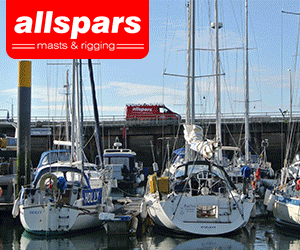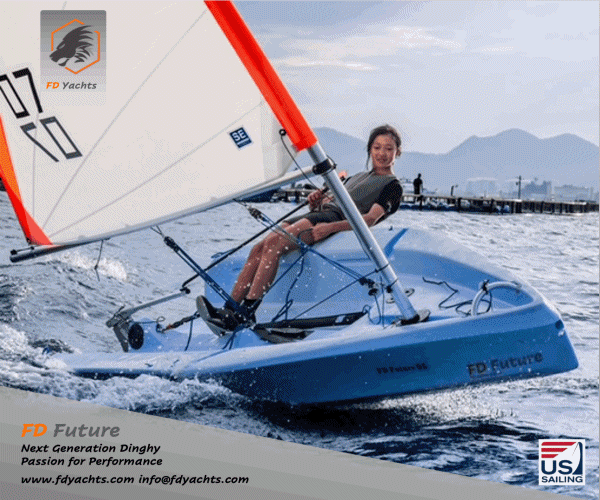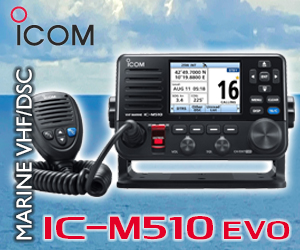What defines a Skiff? |
Post Reply 
|
Page <12345 9> |
| Author | |||
gbrspratt 
Posting king 
Joined: 26 Sep 11 Location: Felixstowe Online Status: Offline Posts: 170 |
 Post Options Post Options
 Quote Quote  Reply Reply
 Topic: What defines a Skiff? Topic: What defines a Skiff?Posted: 04 Oct 11 at 10:49am |
||
A 505 Planes upwind??
|
|||
 |
|||
fudheid 
Far too distracted from work 

Joined: 21 Apr 11 Location: 51.53 N 01.28 E Online Status: Offline Posts: 241 |
 Post Options Post Options
 Quote Quote  Reply Reply
 Posted: 04 Oct 11 at 10:52am Posted: 04 Oct 11 at 10:52am |
||
505 doesn't have asy spin?? http://www.skiffing.org.uk/ the original skiff club in the UK over 100 years old check it out.
 |
|||
 |
|||
gbrspratt 
Posting king 
Joined: 26 Sep 11 Location: Felixstowe Online Status: Offline Posts: 170 |
 Post Options Post Options
 Quote Quote  Reply Reply
 Posted: 04 Oct 11 at 10:58am Posted: 04 Oct 11 at 10:58am |
||
|
true..... so its multiple characteristics that define a "skiff"
|
|||
 |
|||
Rupert 
Really should get out more 
Joined: 11 Aug 04 Location: Whitefriars sc Online Status: Offline Posts: 8956 |
 Post Options Post Options
 Quote Quote  Reply Reply
 Posted: 04 Oct 11 at 11:20am Posted: 04 Oct 11 at 11:20am |
||
|
According to Graham Anderson in "Fast Light Boats", the Sydney harbour 18 footers were heavy dispalcement boats which didn't plane at all, but carried so much sail they went very fast. If this is the origin of the term skiff in this context, then it is simply a synonym for the word dinghy, presumebly to distinguish them from the dinghies with lugsails or that are towed behind yachts and rowed to the shore to get to the pub.
If that is the case, then any arguement that the modern useage of the word skiff has to have the boat linked to Australia is clearly nonsense - the definition has moved on, and the word skiff can be used to describe any fast boat with an assymetric spinnaker. Those who think the definition needs multiple clauses are forgetting that to most of the world, all dinghies look the same, and to the majority of sailors even, a Buzz looks pretty much the same as a 29er.
|
|||
|
Firefly 2324, Puffin 229, Minisail 3446 Mirror 70686
|
|||
 |
|||
tickel 
Far too distracted from work 
Joined: 21 Dec 05 Location: United Kingdom Online Status: Offline Posts: 408 |
 Post Options Post Options
 Quote Quote  Reply Reply
 Posted: 04 Oct 11 at 11:30am Posted: 04 Oct 11 at 11:30am |
||
|
I prefer "if it falls over with no one in it" as the best answer. My Byte falls over even when I am in it..........
|
|||
|
tickel
|
|||
 |
|||
Jack Sparrow 
Really should get out more 

Joined: 08 Feb 05 Location: United Kingdom Online Status: Offline Posts: 2965 |
 Post Options Post Options
 Quote Quote  Reply Reply
 Posted: 04 Oct 11 at 12:22pm Posted: 04 Oct 11 at 12:22pm |
||
|
Dam I can't call my Landyacht a land skiff if I use definition!

|
|||
 |
|||
alstorer 
Really should get out more 

Joined: 02 Aug 07 Location: Cambridge Online Status: Offline Posts: 2899 |
 Post Options Post Options
 Quote Quote  Reply Reply
 Posted: 04 Oct 11 at 12:52pm Posted: 04 Oct 11 at 12:52pm |
||
|
Is "uses trapezes" really a deal breaker here?
|
|||
|
-_
Al |
|||
 |
|||
Chris 249 
Really should get out more 

Joined: 10 May 04 Online Status: Offline Posts: 2041 |
 Post Options Post Options
 Quote Quote  Reply Reply
 Posted: 04 Oct 11 at 1:10pm Posted: 04 Oct 11 at 1:10pm |
||
|
...Okay..... fuelled by some nice wine and a nice dinner with friends across the road, I shall bore you all with the results of actual detailed research into this (and other) questions.... The ""skiffs" have historically been distinct from dinghies, even the NZ/Aussie high performance lightweight dinghies which actually fuelled much development that was adopted by the "skiff" classes. The two streams (development dinghies and skiffs) were arguably complementary but definitely different AND JUST ABOUT EVERY SKIFF DESIGNER AGREES ON THIS. The term AS USED TODAY to describe a general type of high-performance sailboats came from the Port Jackson Skiffs created by William Golding. These were one of the several "open boat" types that raced in Port Jackson (Sydney) and other Australian ports. These boats, influenced by local conditions and US Sandbaggers (via Sandbagger-influenced UK boats sold to Aus by a Liverpudlian) ranged from 24 to 6 feet. These other boats were NOT historically known as skiffs, as is clearly demonstrated by contemporary sources. Unlike the other Open Boats which had no restrictions bar length, the Port Jackson Golding boats had restrictions on crew numbers, rig size and beam. The original 12 and 14 foot classes in the Port Jackson Skiff types died out and only the 16 Footers remained. Probably because the 16s had restrictions on the power (in terms of crew righting moment and rig size) they lead the way in improving efficiency at a time when the other Open Boats improved speed largely by chucking bigger rigs on fatter boats. By the 1930s, the 16s had developed the "heel less" hull. This had straight planing-style lines aft, a clear point of differentiation from the other Open Boats which still had the old "heel" or "tuck up", where the buttock lines away from the centre of the hull rose sharply leaving a distinct "heel" formed by a keelson along the centreline. This "heel" or keelson may have been useful (or vital) in keeping the Open Boats in a straight line when carrying their vast rig, but it prevented a planing type from evolving. Lead by the Queensland fleet (despite the reputation of the Sydney fleets, the Queenslanders created most innovations in the skiff types for years) the "heel less" type created a veritable revolution in 16s. The 16 Foot Skiff type model - not just the "heel less" hull shape but also the skinnier, lighter and smaller-rigged type was so much more efficient than the old fat heavy Open Boats that the 16s, despite their small restricted rigs, could beat the 18s around the course, as proven by many contemporary results and reports. This lighter, skinnier shape created by 16 Foot Skiff rules was then transferred to the 18s in the form of the famous Aberdare and her predecessors of the 1930s. These lighter, smaller-rigged and slimmer 18s easily beat the older big-rig 18s in most conditions. The Aberdare types planed (although the replica of Aberdare planes more like a Flying 15 than a modern skiff) with about 6 crew, whereas the old boats dragged half the ocean along with crews of 12 or more. Contemporary reports clearly show that the old-type 18 footer sailors often hated the Aberdare type, which they christened the "skiff type" because the skinnier, lighter heel-less hulls had definitely and clearly evolved from the 16 Foot Skiffs. Many traditionalists said that the Aberdare skiff types could not demand the public following that the spectacular rigs of the old heavier types had created. Anyone who believes that "skiffies" have always favoured innovation and speed simply has not done their homework and this is merely one example of the fact. Again, this is simply verifiable, demonstrable historical truth. In the end, the followers of the "skiff type" 18s won, and gradually the term "skiff" went from describing 16s, to a particular form of 18, and then to all "skiffs" of the 12, 16 and 18 classes (and sometimes Aussie 14s). This was not universal - the Kiwis called 18s by their LOA or as "Flying 18s" and the "skiff" label only gradually came to describe the various classes as a whole. Historical research clearly demonstrates that until about 1987, the term "skiff" (as used to describe a particular and distinct type of racing centreboard mono) as only used for 12s, 16s, 18s and (rarely) Aussie 14s. It was then used as an advertising term by the VS, a local class vaguely like a 16 Foot Skiff without steroids, and was then applied as an adjective to similar boats. So "skiff", as used to describe boats of the 49er/800 style, DOES clearly have a definite historical development and any attempt to deny it is, to be frank, complete and utter revisionist bullsh*t of the most vacuous sort. Skiffs cannot be defined by hull shape, because past and present skiffs have had all sorts of different hulls - round bilged, hard chined, multi chined, planing, or non planing. The current dominant 12 Foot Skiff hull has round bilges, the 18 hulls have chines, the 16 hull is round-bilged forward and chined aft. They cannot be defined by speed historically, because at times they were slower than northern hemisphere type dinghies. They cannot be described by their attitude to development,because they are not any more open to development than other types - most of the attributes given today to "skiffs" were seen in conventional dinghies before they were seen in the classes that created the "skiff" label as it is used today. Skiffs are not boats that tack downwind, because that was specifically described even in ocean racers of the 1930s. Skiffs are not just boats that plane upwind, because many skiff designers today say that (1) planing is almost impossible to tell from fast displacement sailing; (2) many "real" skiffs like 16s and 12s do NOT plane upwind; (3) other boats like Canoes and (arguably) 505s and Tasars and scow Moths plane upwind. Fuelled by some nice wine and a nice meal with friends across the road, I'll say that most faux definitions of the term "skiff" AS GENERALLY APPLIED TO SMALL RACING SAILBOATS are complete crap, historically and technically speaking. The classes from which the term can be traced in this context have been fast, slow, round bilged, scows, hard chined, rigidly against development, pro development, and had every contradiction available. Technically, the only real points of skiffs historically has been that they have had MUCH higher crew-induced righting moment and MUCH higher sail area oer LOA than conventional dinghies, and this has been consistent throughout the evolution of the term from the 1800s to the 2000s. Edited by Chris 249 - 04 Oct 11 at 1:35pm |
|||
 |
|||
Chris 249 
Really should get out more 

Joined: 10 May 04 Online Status: Offline Posts: 2041 |
 Post Options Post Options
 Quote Quote  Reply Reply
 Posted: 04 Oct 11 at 1:27pm Posted: 04 Oct 11 at 1:27pm |
||
So a Canoe is a Skiff? A canting keel maxi yacht, a Formula 18 or Tornado cat is a skiff? If I stick an assy on a Contender - a boat created by a skiff designer WHO KNEW THAT IS WAS DIFFERENT FROM A SKIFF AND FOLLOWED A DIFFERENT HERITAGE - it suddenly becomes a skiff, despite the fact that it was more influenced by European boats and has not a single piece of development from the Skiff classes in its design? When he created his skiffs and Contenders, Lexcen recognised the European heritage AND the "skiff" heritage and the different between them. With respect, by the same logic I could say that a Formula Vee is a Formula One car, that a Stuka was a fighter plane, or that an Impressionist masterpiece is an Expressionist work of art. To pretend that there is no longer any difference between the two streams of design seems to be like pretending that there's no difference between national types of cooking, or accents, or like saying that any loud music is punk without giving a nod to CBGBs, the Pistols etc. I'm not saying that a Buzz is a skiff and a 29er isn't, but the simple fact is that IF YOU DO THE RESEARCH you can see that the term has a distinct historical lineage and development. The irony is that if see recognise the difference between the various streams, we're probably giving MORE credit to the UK designs than if we simply say "fast boats with assys are skiffs". That seems to subsume the huge and vital influence of other types and countries into a blancmange. Since we expect people to do the research when they speak of Jack Holt's designs, or the development of Formula One cars or Time Trial bicycles or recorders or PCs or Merlin Rockets, can't we expect people to do the research before saying what a skiff is or isn't? There's about as much reason to say that "any fast assy boat is a skiff" as there is to say that any boat with a flat centre-section is a National 12, or that any boat that planes on a reach is an Uffa Fox Int 14, or that any boat with a trap is a kolek. If we respect the work that people have done on the history of dinghy sailing, and the vast and vital contribution made by the northern hemisphere countries, couldn't we also expect that people also do the research (in the same way that is done when dictionaries are compiled) when dealing with this question? Sailing's an odd sport. In other sports, they respect their history. In sailing, we seem to ignore it or assume that the facts are born within each sailor, sparked into life by the heat of the club bar, without any need to do that tiresome stuff like blowing the dust (literally) off museum copies of YW, Y & Y and the 18 Footers League. If we don't expect lexicographers in other areas to come to verdicts without doing their homework, why do we assume it's OK in dinghy saiing? Edited by Chris 249 - 04 Oct 11 at 1:44pm |
|||
 |
|||
Daniel Holman 
Really should get out more 
Joined: 17 Nov 08 Online Status: Offline Posts: 997 |
 Post Options Post Options
 Quote Quote  Reply Reply
 Posted: 04 Oct 11 at 1:36pm Posted: 04 Oct 11 at 1:36pm |
||
|
I am pretty sure that a "skiff" is generically a light open dinghy, and that rowing skiffs have been round for hundreds of years, their plans can be bought in wooden boat magazine.
HOWEVER in the context of small sailing vessels, skiffs are a species in their own right, and I belive that Chris249 has got it spot on in his (semi) drunken rant. An educated eye will be able to identify this species DNA in some but by no means all boats that plane upwind / have an assymetric kite etc. |
|||
 |
|||
Post Reply 
|
Page <12345 9> |
| Forum Jump | Forum Permissions  You cannot post new topics in this forum You cannot reply to topics in this forum You cannot delete your posts in this forum You cannot edit your posts in this forum You cannot create polls in this forum You cannot vote in polls in this forum |
Bulletin Board Software by Web Wiz Forums® version 9.665y
Copyright ©2001-2010 Web Wiz
Change your personal settings, or read our privacy policy
Copyright ©2001-2010 Web Wiz
Change your personal settings, or read our privacy policy














-(1)-202408140552.gif)










 Printable Version
Printable Version Delicious
Delicious Digg
Digg Facebook
Facebook Furl
Furl Google
Google MySpace
MySpace Newsvine
Newsvine reddit
reddit StumbleUpon
StumbleUpon Twitter
Twitter Windows Live
Windows Live Yahoo Bookmarks
Yahoo Bookmarks Topic Options
Topic Options